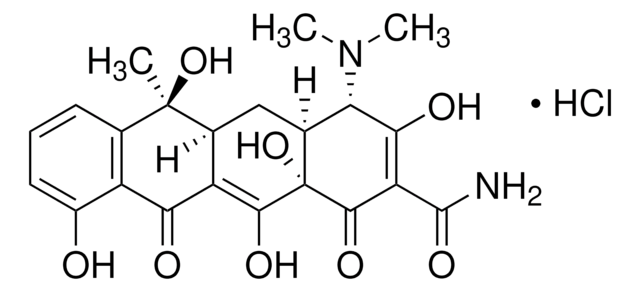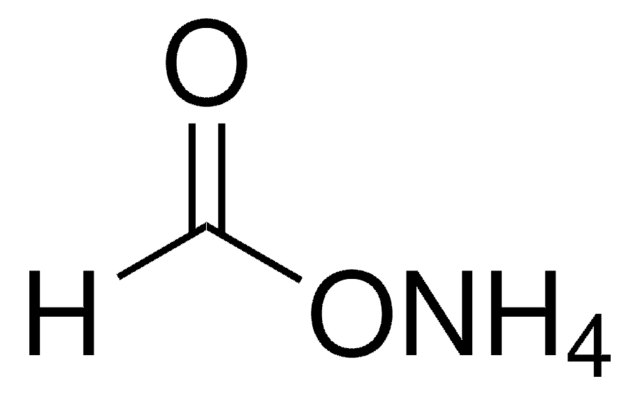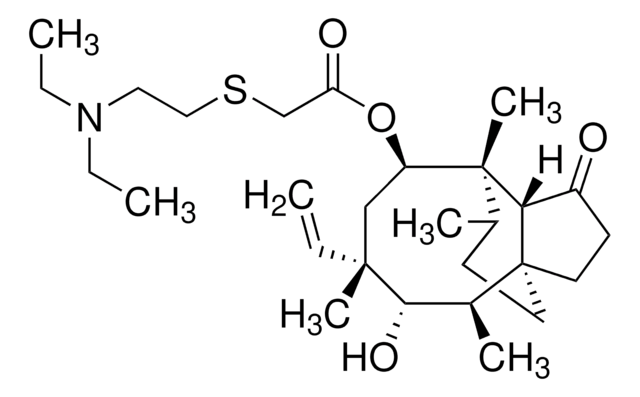V4140
Virginiamycin S1
≥99% (HPLC)
Sinónimos:
dihydro virginiamycin S1, Antibiotic 899, Staphylomycin S
About This Item
Productos recomendados
origen biológico
Streptomyces virginiae
Nivel de calidad
Ensayo
≥99% (HPLC)
Formulario
solid
condiciones de almacenamiento
(Keep container tightly closed in a dry and well-ventilated place.)
color
white
espectro de actividad antibiótica
Gram-positive bacteria
Modo de acción
protein synthesis | interferes
temp. de almacenamiento
−20°C
cadena SMILES
CC[C@H]1NC(=O)[C@@H](NC(=O)c2ncccc2O)[C@@H](C)OC(=O)[C@@H](NC(=O)[C@@H]3CC(=O)CCN3C(=O)[C@H](Cc4ccccc4)N(C)C(=O)[C@@H]5CCCN5C1=O)c6ccccc6
InChI
1S/C43H49N7O10/c1-4-29-40(56)49-21-12-17-30(49)41(57)48(3)32(23-26-13-7-5-8-14-26)42(58)50-22-19-28(51)24-31(50)37(53)47-35(27-15-9-6-10-16-27)43(59)60-25(2)34(38(54)45-29)46-39(55)36-33(52)18-11-20-44-36/h5-11,13-16,18,20,25,29-32,34-35,52H,4,12,17,19,21-24H2,1-3H3,(H,45,54)(H,46,55)(H,47,53)/t25-,29-,30+,31+,32+,34+,35+/m1/s1
Clave InChI
FEPMHVLSLDOMQC-IYPFLVAKSA-N
Descripción general
Aplicación
Acciones bioquímicas o fisiológicas
Nota de preparación
Otras notas
Código de clase de almacenamiento
11 - Combustible Solids
Clase de riesgo para el agua (WGK)
WGK 3
Punto de inflamabilidad (°F)
Not applicable
Punto de inflamabilidad (°C)
Not applicable
Elija entre una de las versiones más recientes:
¿Ya tiene este producto?
Encuentre la documentación para los productos que ha comprado recientemente en la Biblioteca de documentos.
Nuestro equipo de científicos tiene experiencia en todas las áreas de investigación: Ciencias de la vida, Ciencia de los materiales, Síntesis química, Cromatografía, Analítica y muchas otras.
Póngase en contacto con el Servicio técnico








